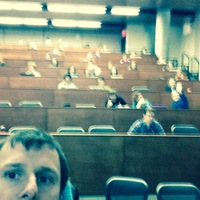
Jeremy Morris
I am currently an Assistant Professor in Media and Cultural Studies in the Communication Arts department at the University of Wisconsin Madison. I teach courses on the history of the Internet, new media and society, and podcasting. My research interests include the digitization of cultural goods and commodities, the transition from software to “apps”, and the current state of the popular music industries. My new book, Selling Digital Music, Formatting Culture (University of California Press) examines the transition from music on CDs to music on computers.
Supervisors: Jonathan Sterne
Address: Madison, Wisconsin
U.S.A.
Supervisors: Jonathan Sterne
Address: Madison, Wisconsin
U.S.A.
less
Related Authors
Eleanor Patterson
Auburn University
Christopher Cwynar
Trent University
Siobhan McHugh
University of Wollongong
Yoonmo Sang
Yonsei University
Kim Fox
American University in Cairo
Tiziano Bonini
University of Siena / Università di Siena
Arshdeep Chawla
University of Leeds
InterestsView All (10)






Uploads
Books by Jeremy Morris
Papers by Jeremy Morris
As machines like the DL4 become increasingly efficient at immediately repeating live loops, new practices of performance evolve and new conceptions of the interaction between musicians, machines, and sounds emerge. Drawing on Bruno Latour’s view of technologies as nonhuman social actors, I use the case of the DL4 to explore how musicians and the DL4 play in concert as partners in music creation. The device amplifies behaviours, musical and physical, that affect the user’s body, their musical practice, and sound itself. By creating loops and “delegating the live” to the DL4, performers using the pedal foreground the musical importance of repetition and trouble the relationship between live performance and recorded mediation. Far from a mundane technical object, the DL4 is a key figure in the network of interactions that constitute musical performances.